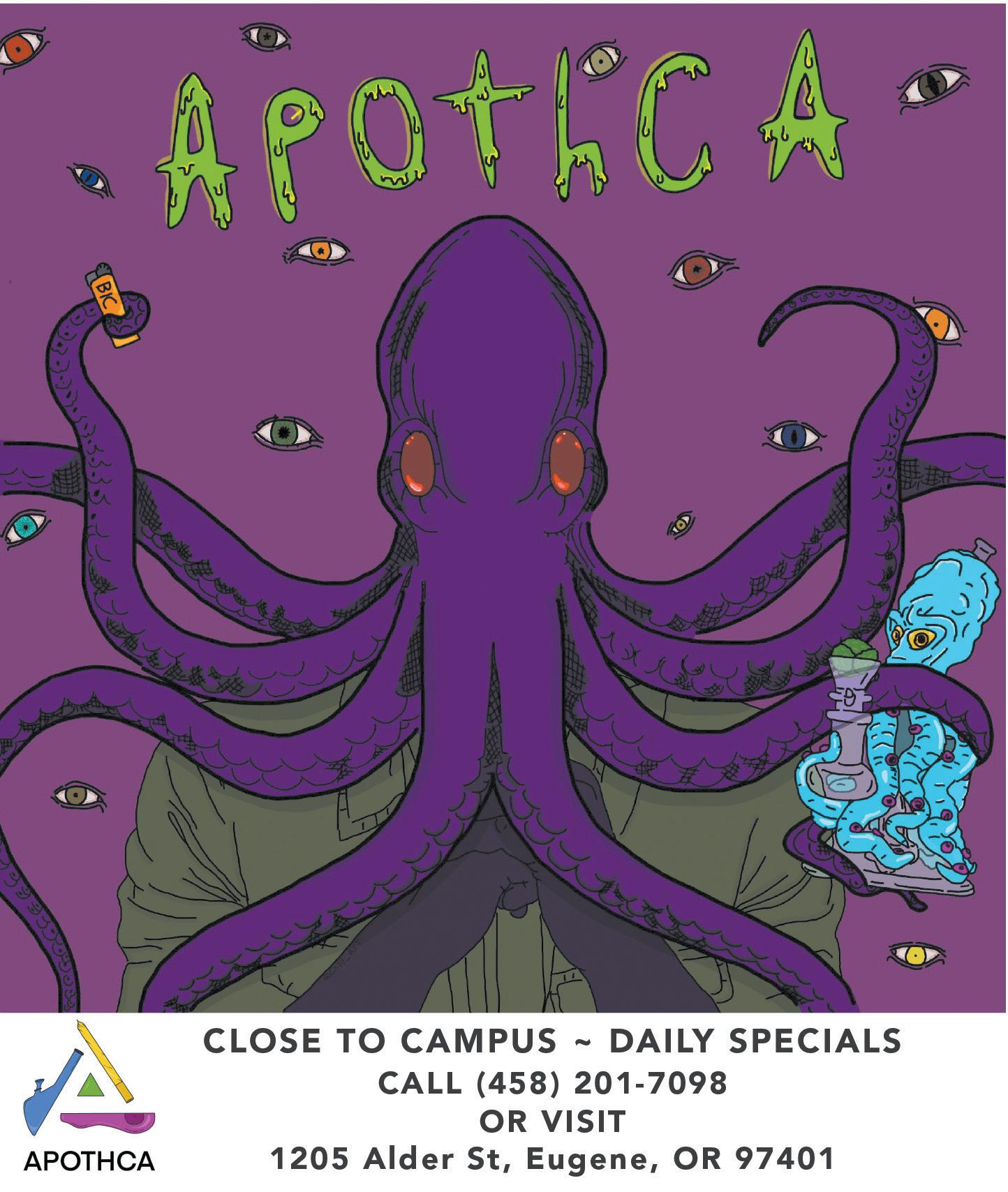








NEWSROOM
EDITOR IN CHIEF
Hannarose McGuinness
PRINT MANAGING EDITOR

Brandon Roth
DIGITAL MANAGING EDITOR
Sarah Matlick
NEWS EDITORS
Alexis Weisend
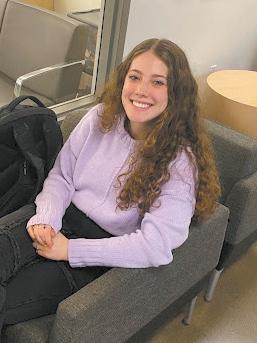
Gavin Gamez
A&C EDITORS
Krista Kroiss
Evan Reynolds
SPORTS EDITORS
Aaron Heisen
Mojo Hill
OPINION EDITORS
Emma J Nelson
Sophia Cossette
PHOTO EDITOR
Maddie Stellingwerf
SENIOR PHOTOGRAPHER
Ian Enger
DESIGN EDITOR
Liz Blodgett
COPY CHIEF
Amanda Lurey
ASSOCIATE COPY EDITORS
Dylan Farell
Logan Robertson
VIDEO EDITOR Troy Munson
PODCAST EDITOR
Jamie Diep
SOCIALS EDITOR
Jennifer Singh
VISUALS EDITOR
Julia Stalnaker
BUSINESS
PUBLISHER & PRESIDENT
Bill Kunerth X317 bkunerth@dailyemerald.com

VP OPERATIONS Kathy Carbone X302 kcarbone@dailyemerald.com
DIRECTOR OF SALES & DIGITAL MARKETING
Shelly Rondestvedt X303 srondestvedt@dailyemerald.com
CREATIVE & TECHNICAL DIRECTOR
Annie Smith X327 creative@dailyemerald.com
STUDENT SALES MANAGER
Amy Mendez
ACCOUNT EXECUTIVES
Riley KeatonValleRoberts
Max Goldenberg
Josh Delapena
ON THE COVER
As a sign of life, Oregon student, Lili Azen smells several daffodils.
Top viewed story in the past week: “City approves 81-Unit affordable housing project” by Alan Torres
(Illustration by Ia BalbuenaNedrow/Emerald)
Second most read story in the past week: “Conservative speaking event is disrupted by protesters” by Caleb Barber

Summary: After its release on January first of 2023, Netflix series “Kaleidoscope” gained traction on TikTok and is now ranked fourth on Netflix top shows. Kaleidoscope tells the complicated, winding story of a master heist of $7 Billion in bonds. Created by Eric Garcia, the show stars Breaking Bad actor Giancarlo Esposito as the leader of the heist. The catch is, Kaleidoscope doesn’t have to be watched in chronological order; it is a choose your own adventure experience.
Recommended by: Analise Levy, a sophomore studying Psychology. “The interesting thing about this show is you can watch it in any order that you want. Netflix gives you the order they recommend, but you can pick and choose. It’s really cool, the story and plot changes depending on the way you watch it.”
(Alexis Weisend/Emerald)
Voices of
UO. “Should Eugene have more public electric vehicles?”

Do you want your voice heard literally? Scan here to respond to our Voices of UO prompt with a brief voice message, and head to www. dailyemerald. com/ multimedia/ podcasts/ next week to listen to the replies!


We want to hear from you:
We want to hear from you: Email editor@dailyemerald. com to submit a tip or a letter to the editor. The ideal length for a letter is 200-500 words, but we publish letters of various lengths online.
(Maisie Plew/Emerald)
For updated coverage of sports and digital-exclusive content, go to www.dailyemerald.com

The goal of this survey is to help the Daily Emerald determine who our publication is reaching on campus and how we can do a better job addressing the needs and interests of the communities we serve. We thank you for your feedback!
More than a year ago, ASUO Senator Kayla Krueger began a project to make fentanyl testing strips available to students in the Erb Memorial Union.
The idea was that ASUO could help prevent overdoses by allowing students already planning on doing drugs to discreetly grab a test strip to test their drug for fentanyl — a similar concept to the condoms available in the EMU.
But UO’s Office of the General Counsel pointed out a problem: Oregon law makes the distribution of testing equipment for analyzing the strength of controlled substances, like fentanyl testing strips, illegal.
Now ASUO is lobbying state legislators to pass a package of opioid harm reduction bills, which would make exceptions for fentanyl test strips under the law and naloxone, a medicine that can reverse overdoses, more accessible.
A current junior, Krueger plans on continuing her efforts to distribute the testing strips through UO if the bills are passed.
If UO — especially as a public institution — is able to distribute these testing trips, it will help make harm reduction a norm, she said.
“It’s okay to take drug safety seriously. It’s okay to talk about it. It’s okay to be safe about it,” she said. “Because it could save your life. It could save your friend’s life. It could save someone else’s life.”
Krueger said she worked with the Oregon Student Association, a nonprofit that advocates for the collective interests of students, to lobby for the bill.
OSA Legislative Director Nick Keough submitted testimony on behalf of OSA supporting the bills and helped students submit their testimony, they said.
“Young people and students are a high-risk group, and they are highly susceptible to accidental overdoses that we have seen have led to tragic and unnecessary death,” they said.
Keough, a former UO student, said they remember when a UO student died from fentanyllaced counterfeit oxycodone pills in 2020. He was
found the day before Christmas.
“This is an absolute tragedy,” Keough said. “And there are many young people that we’re hearing are losing their lives in a similar manner.”
ASUO Executive Vice President Kavi Shrestha said the bills would also make it easier for ASUO to distribute Narcan, a brand of naloxone.
He and other ASUO members testified verbally on Jan. 30 in front of the Legislature in favor of the package of bills.
Shrestha has begun a project to distribute Narcan on campus but ran into problems when he tried to distribute it through ASUO.
“There’s just a lot of confusion over who would be held liable for distributions, [and] could it have implications on the university,” he said.
As a result, he began distributing Narcan through nonprofits instead.
Liability is a concern for many groups distributing naloxone, Shrestha said, so he’s been working with Rep. Maxine Dexter (D-Portland) for the last few months on an amendment to one of the bills, HB 2395, which would protect distributors of
naloxone from civil and criminal liability.
Krueger said Narcan is a great resource to have, but it’s a medication to use after an overdose occurs. Fentanyl testing trips can prevent overdoses in the first place.
“In tandem with Narcan, it would greatly reduce deaths from an opioid overdose,” she said.
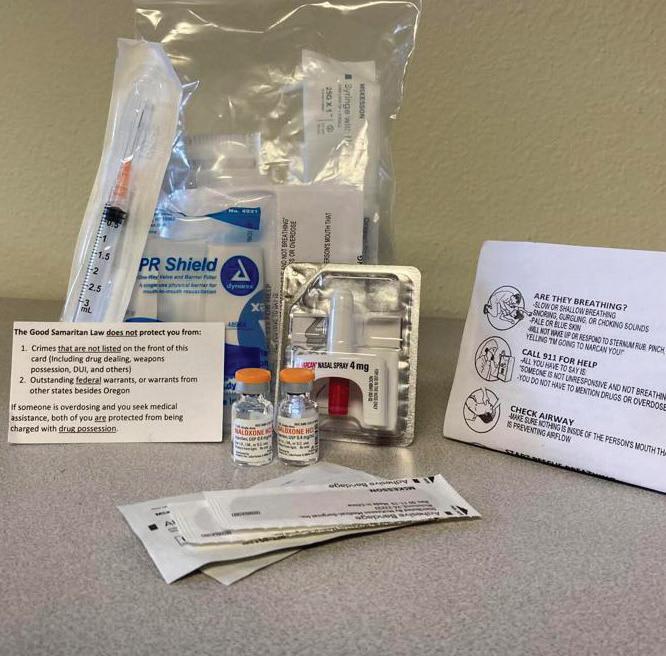
Fentanyl test strips are technically illegal under Oregon law, but ASUO is trying to change that.
Sunday’s game between the Philadelphia Eagles and Kansas City Chiefs marks the first time in NFL history that two Black quarterbacks have faced off in the Super Bowl. Sports have always been a large part of the history and elevation of Black people in our country, and Black excellence will no doubt be on display this weekend.
Playing in his first Super Bowl, quarterback Jalen Hurts will lead the Eagles. He’s a true runpass option quarterback who has shown out this season to cement his new elite reputation. Former league MVP quarterback Patrick Mahomes will lead the Chiefs in his third Super Bowl appearance.

While the NFL is a predominately Black organization, only seven Black quarterbacks have played in Super Bowls since the first game in 1967. This isn’t a coincidence, as the NFL and its coaches
have been systematically dissuading Black players from the quarterback position since day one.
The narrative has historically been that elite Black football players have “athleticism” and “raw talent,” while white players in the NFL possess “intellect” and a “high football IQ.” This narrative — aside from having obvious racist undertones — has perpetuated a lack of Black quarterbacks in the NFL.
“The quarterback position was the position that a lot of people didn’t think we could play for different reasons,” former NFL player Warren Moon said in an interview with CNN about being a Black quarterback. “Whether it was the leadership, whether it was being able to think, being able to make critical decisions at critical times. You know, be the face of a franchise, all those different things that go along with being a franchise quarterback.”
The number of Black quarterbacks in the league has grown in recent years, but it hasn’t been without skepticism and pushback. Hurts, one of the quarterbacks in this Super Bowl, has been criticized for his ability to play the position throughout his time in both college and the NFL.
At the 2020 NFL combine, Hurts was asked by one reporter if he would consider changing positions. This wasn’t the first time a Black quarterback has been asked this question, as Lamar Jackson faced similar remarks at his combine in 2018.
In response to the reporter, Hurts said, “I’ve always been a team guy first, but I think I’m a quarterback. I think that’s that.” While the language was coded, it’s obvious why Hurts and Jackson were asked these questions and not the several other white quarterbacks present at the combine.
Quite simply, this is nothing new — Black people at all levels of professionalism have been questioned on their belongingness no matter their qualifications. Nevertheless, Hurts’ and Mahomes’ seasons, alongside many other current Black quarterbacks, have more than proved Black players’ ability to dominate the position.
The future of the NFL will no doubt include more Black quarterbacks rising to this level, and we can only hope Mahomes’ and Hurts’ success will continue to dispel the racist narrative that is discouraging younger Black players from this position.
“I’ve learned more and more about the history of Black quarterbacks since I’ve been in this league. And the guys that came before me and Jalen set the stage for this, and I’m just glad we can set the stage for kids that are coming up now,” Mahomes said in a press conference last week.
Additionally, Black players breaking down barriers on the field isn’t the only thing we have to celebrate this Super Bowl. Hurts’ agent Nicole Lynn has now become the first Black woman to represent a Super Bowl quarterback. Not to mention Hurts also has an all-female management team, with three of the five members being Black women.
Representation will always be important, and it is extra special how Black people will be succeeding on such a national stage during this Black History Month. Whether the Eagles or Chiefs come out on top, it’s a win for the culture this Super Bowl.
Sophia
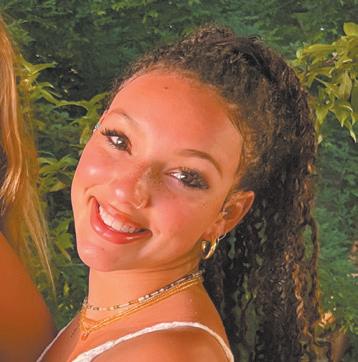
The meaning of significance runs deep in each individual. Some choose to express this through tattoos. But how does time contribute to the significance of tattoos?
BY BEATRICE BYRD“Now I am embracing [my medical freedom] as well as the freedom of doing with my body what I want,” Syrnyk said.
I got my tattoo in memory of my grandmother, as a tribute to the strength my mother showed after dealing with her mother’s death. My grandmother’s house had an everlasting smell of eucalyptus in it due to the soap she used. So on my arm, to embrace the strength of those I saw in grief, I have a branch of eucalyptus accompanied by some lyrics.
I got my tattoo in May of 2022 because I was concluding a year that showed me the stubbornness and toughness I inherited from my mother. It also happened to be six days before her birthday.
This morning, I watered my plants and rid them of their sickly leaves. I made my bed. And each morning, the weight of my blankets feels different depending on my emotional state. To me, this defines significance. All of these things are worthy of my attention because they reflect what my brain deems important. Tattoos carry that same significance.
Tattoo identity is fascinating. I got my first tattoo at the end of spring term last year. While its significance is more than the time of year I received it, the timing added to my excitement. Though it sounds cliche, I changed a lot during my first year at college. My tattoo helped me catalog that.
The tattoos of others often catalog that same significance. And the timing of getting tattooed sometimes plays a large part in its representation.
Peyton Syrnyk, a junior at the University of Oregon, got their first tattoo on Sept. 2, 2022. Across the length of their arm illustrates a vase spilling out an array of flowers, each with their own meaning and personalization.
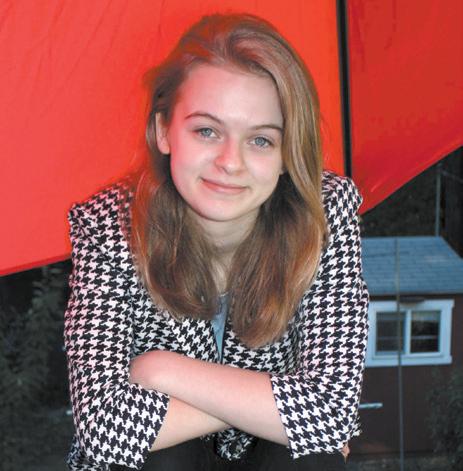
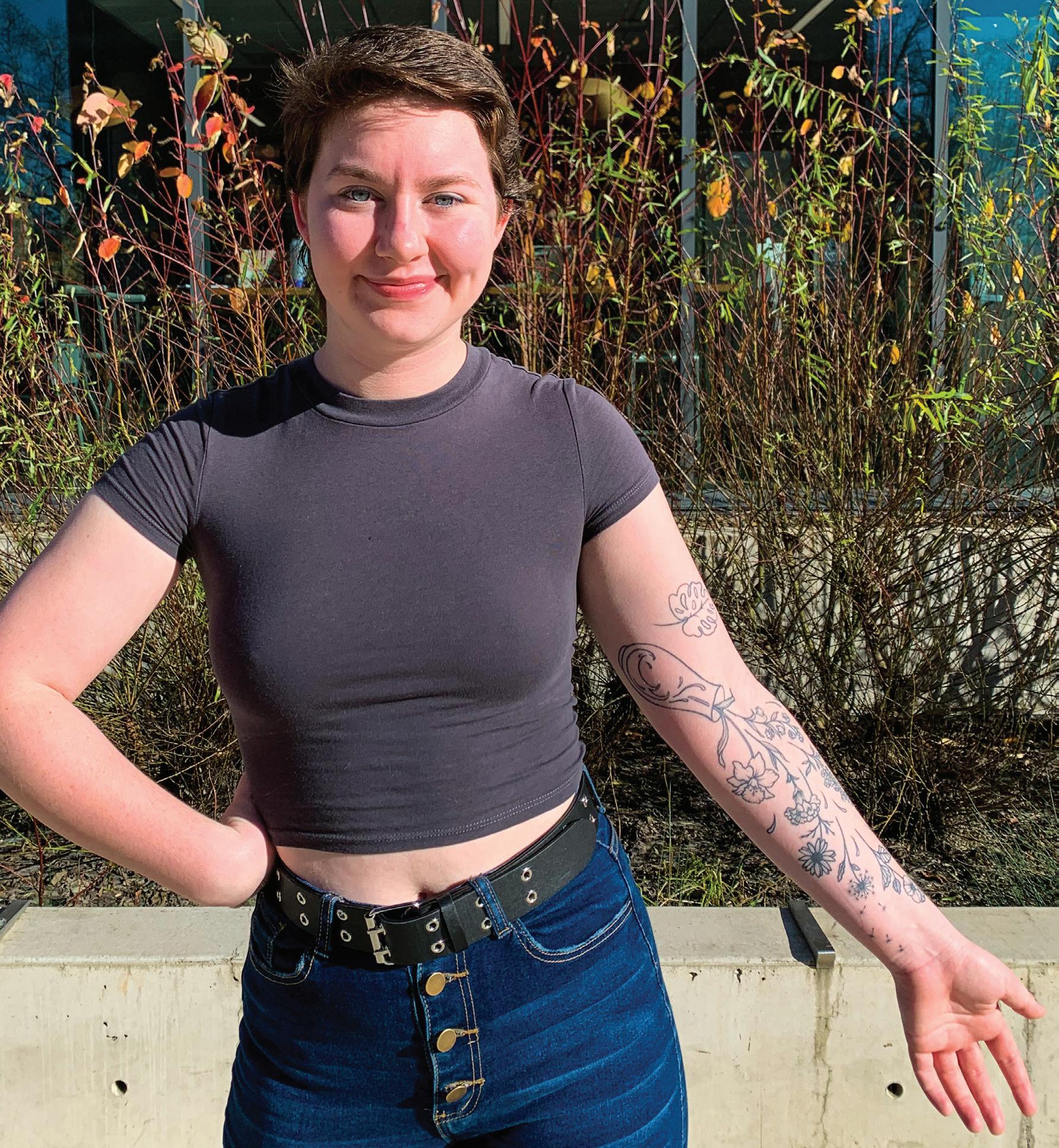
“One thing that I was thinking about was making sure I had a flower that represents each of my family members,” Syrnyk said, admiring their tattoo.
The eight different flowers cascading down Syrnyk’s arm capture memories of home, family pets, familiar smells and self-growth.
“I designed the leaf myself on the day I got the tattoo,” Syrnyk said, looking at the leaf from a monstera plant on their arm, “It reminds me that joy expands. You can find new things that make you happy any day. You never know what’s coming.”
The timing of Syrnyk’s tattoo also had a large role in its meaning.
Sept. 2, 2022 was the one-year anniversary of a major surgery Syrnyk underwent: an adenoidectomy and a tonsillectomy. But the freedom this procedure showed them coincided with the liberation they felt from getting tattooed.
Syrnyk struggled with sleep apnea for years. Many doctors and surgeons did not accept their struggles, and therefore, would not complete the necessary procedure. Finding a surgeon who finally believed in doing something about it was a huge relief to the ongoing battle they had while advocating for their health and well-being.
“I felt like I had more of my medical freedom back, and it just felt like a new beginning,” Syrnyk said.
When they found out they could get their tattoo on the anniversary of their procedure, it was an immediate sign to book the appointment for that day.
Tattoos are incredibly personal. And the ways in which we relate to them demonstrate to others our values. Syrnyk’s flowers capture the meaning of love, memory and happiness. Mine emphasizes maternal strength. No matter the method of expression one chooses, significance leads to stories. And stories about life and strength will always matter.
We are looking for volunteers to to hang out with our kitties in the PetSmart Catteries.
Theres nothing more relaxing than a purring cat in your lap.
Minimum 2 hours per week- choose from 3 shifts per day/7 days a week! Sign up here: catrescues.org/volunteer
 BY ALEXIS WEISEND • TWITTER @WEISEND_ALEXIS
BY ALEXIS WEISEND • TWITTER @WEISEND_ALEXIS
program that would require homeowners to homes are.
541-485-3655

efficiency upgrades, according proposed by Councilor Jennifer Manager Sarah Medary to community engagement process, as well session to share feedback from develop the framework of a draft motion passed unanimously, but up concerns.
Asking for a Friend is the Daily Emerald’s sex and relationship column. Every other week, Aisha Ghorashian answers anonymous questions about anything from how to date, to sex, to how to heal a broken heart. Scan the QR code to submit a question!
change,” Syrett said. “Allowing a potential buyer to understand the energy cost of a particular home they are considering allows them to make a wiser choice and understand up front the cost they might face.”
program that would require homeowners to homes are.
1193

Order online or for best selection call us.

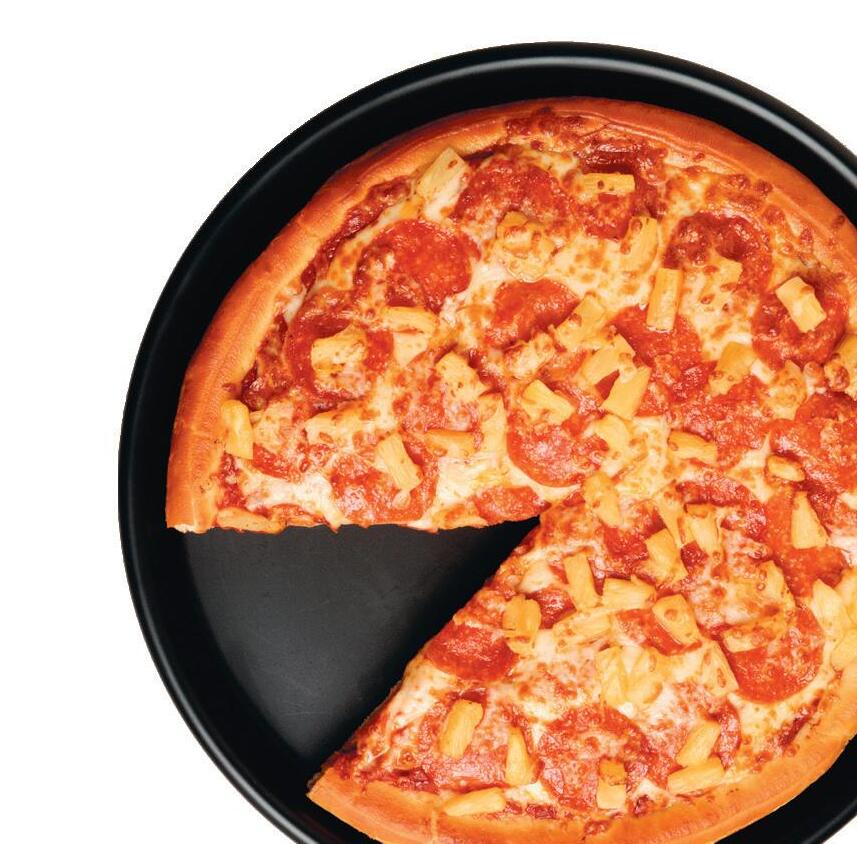




Clark said Syrett’s comment about savings made sense to him.
efficiency upgrades, according proposed by Councilor Jennifer Manager Sarah Medary to community engagement process, as well session to share feedback from develop the framework of a draft motion passed unanimously, but up concerns.
Asking for a Friend is the Daily Emerald’s sex and relationship
The council unanimously passed two other motions: one to direct the city manager to bring back an implementation plan including potential funding
understand the energy cost of a particular home they
options for renters. The program for renters must be in alignment with Climate Action Plan 2.0 Action B3,
motions: one to direct the city manager to bring back
Keating said renters are noticeably motion, and he supports applying the rental units as well as single-family
back funding program be B3, council programs or the Climate is the free, and
a in week!
city as well as other actions that support the Climate
6-10PM
Keating said renters are noticeably motion, and he supports applying the rental units as well as single-family Randy Groves said he also supports which make up 52% of Eugene’s Clark said he is concerned that expense would fall back on the or renting a home and worsen the Eugene. communities, obtaining a home between $150 and $300, city of Sustainability Manager Chelsea Clinton cost per score in Portland is $125, agenda.
options for renters. The program for renters must be in alignment with Climate Action Plan 2.0 Action B3,
JANUARY 29TH
LANE EVENTS CENTER IN THE WHEELER PAVILLON
Syrett said a home energy score gain in savings for buyers. considered in the context of all the are all bearing because of climate
PERFORMANCES BY Xanman, TeeJay3k AND
Randy Groves said he also supports which make up 52% of Eugene’s Clark said he is concerned that expense would fall back on the or renting a home and worsen the Eugene. communities, obtaining a home between $150 and $300, city of Sustainability Manager Chelsea Clinton cost per score in Portland is $125, agenda.
We are looking for volunteers to to hang out with our kitties in the PetSmart Catteries.
team takes on the
PERFORMANCES BY Xanman,
Theres nothing more relaxing than a purring cat in your lap.
Syrett said a home energy score gain in savings for buyers. considered in the context of all the are all bearing because of climate
Minimum 2 hours per week- choose from 3 shifts per day/7 days a week! Sign up here: catrescues.org/volunteer
city as well as other actions that support the Climate Recovery Ordinance and Climate Action Plan 2.0 is estimated at $130,000, according to the agenda. Although the proposed home energy score requirement does not apply to rental units yet, the city of Eugene funds the Score Program with the University of Oregon and EWEB, which offers free, voluntary home energy scores to both renters and property owners.
Women’s Basketball team takes on the UC Davis Aggies on Dec. 1, 2021 at Matthew Knight Arena. (Serei Hendrie/Emerald)
The Daffodil Project represents hope, memory and community to some Eugene residents.
BY: ROMIE AVIVI STUHLOn a brisk and sunny morning last November, about 20 students gathered at the Hillel House on Hilyard Street. Hillel is an international organization that supports Jewish students across college campuses. Disney musical songs blasted from a speaker as students removed debris and weeds from the ground by the millrace. The students were preparing the land for the following day’s planting of 250 daffodils. While the planting beautified the plot of land, it had a greater purpose: to commemorate the loss of 1.5 million children who perished in the Holocaust.
The planting on Hilyard Street was part of an international initiative — the Daffodil Project. This project aims to create a living memorial by planting 1.5 million daffodils around the world. To date, 861,000 daffodils have been planted in 469 locations.
“I think there’s something really amazing that a group of students took a day off their weekend to come and clear out the land so that flowers can be planted in honor of Holocaust victims,” Lili Azen, a member of Hillel, said.
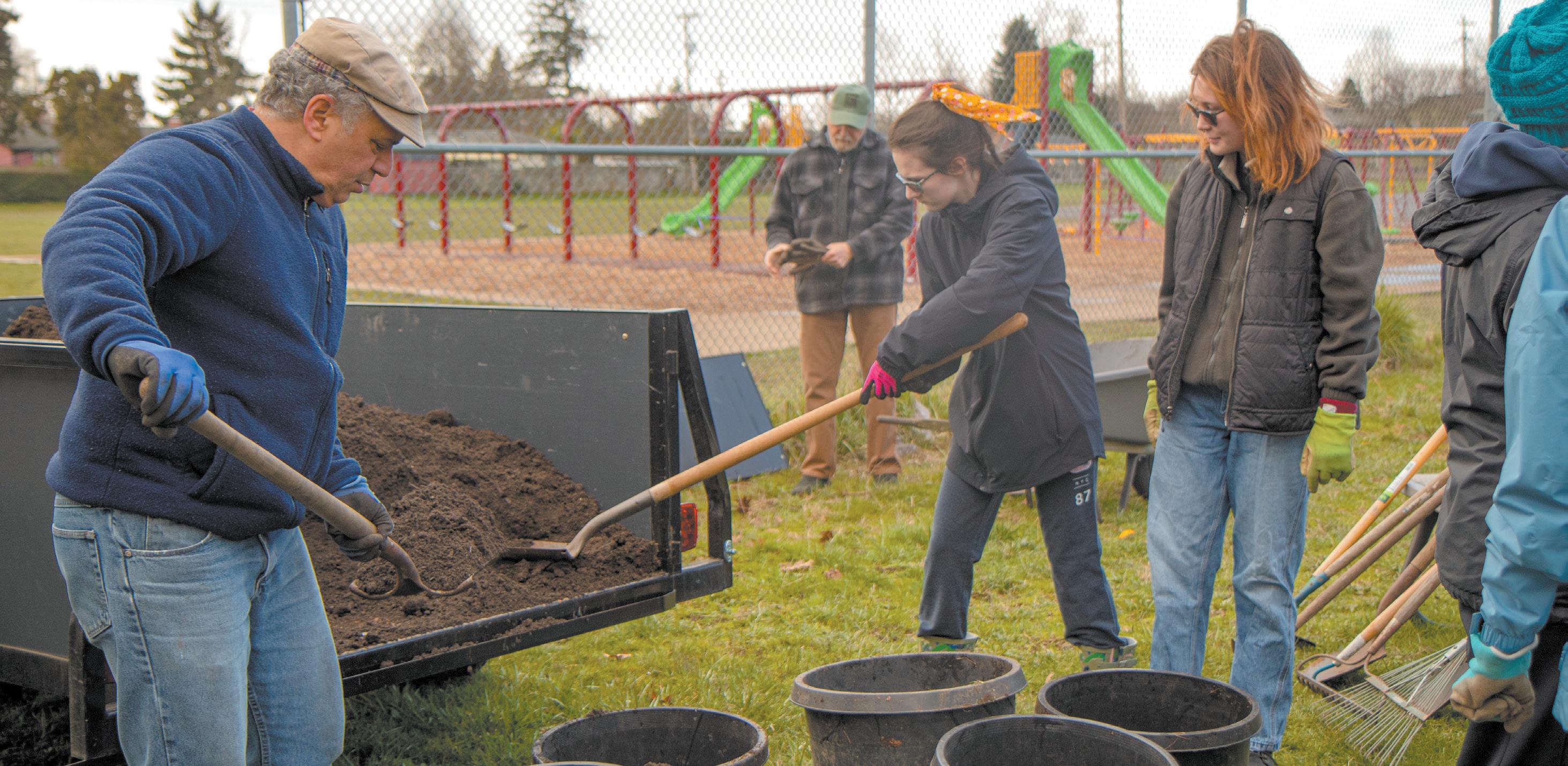
The project was founded by Andrea Videlefsky in 2010. She wanted to educate young people about the Holocaust because she believes children are often the most vulnerable when disasters occur and require the most support.
“I was looking for a project to involve the younger generation,” Videlefsky said. “I really wanted to try and inspire the next generation.”
Videlefsky was contemplating how to best accomplish her goal. As she explored different ideas, she came across the daffodil. Its shape and color reminded her of the yellow star of
David forced upon the Jewish people during the Holocaust. Videlefsky said daffodils are also a representation of resilience. They survive harsh winters and bloom again each spring. The daffodil became the inspiration for the project.
“They usually just bloom for a short period of time, kind of like the life of the children,” Videlefsky said. “Very short, but also very beautiful.”
Hillel is one of four locations in Oregon that joined the Daffodil Project this year. Ronda Dietrick, a Eugene resident, was researching daffodils on the internet when she stumbled across the Daffodil Project. She was inspired to join the initiative and was amazed that no planting events had occurred in Oregon.
Dietrick, a fifth generation Oregonian, is not Jewish herself. She spent many years working as a nurse and
volunteered in Kenya in 1998 where she saw the consequences of the AIDS epidemic. Seeing the devastation children face around the world is a particular reason for why she wanted to work on initiatives such as the Daffodil Project.
“I see the impact it has on children, and it just really gets to my heart,” Dietrick said. “We need to straighten up and start getting our act together and be kinder to one another.”
With an Anti-Defamation League study finding that about 85% of Americans believe in at least one antisemitic trope, a rise of 24% from 2019, projects such as the Daffodil Project may be more important than ever. Through learning from the past people can recognize dangerous patterns and warning signs which may help to prevent the Holocaust from repeating itself.
The Daffodil Project provides interested organizations with 250 bulbs and a plaque detailing the project’s mission. Participants agree to plant the bulbs, and an additional 250 bulbs the following year. The additional bulbs and planting supplies are not provided by the Daffodil Project. In Oregon, Dietrick covered these additional costs in hopes of making organizations more likely to join.
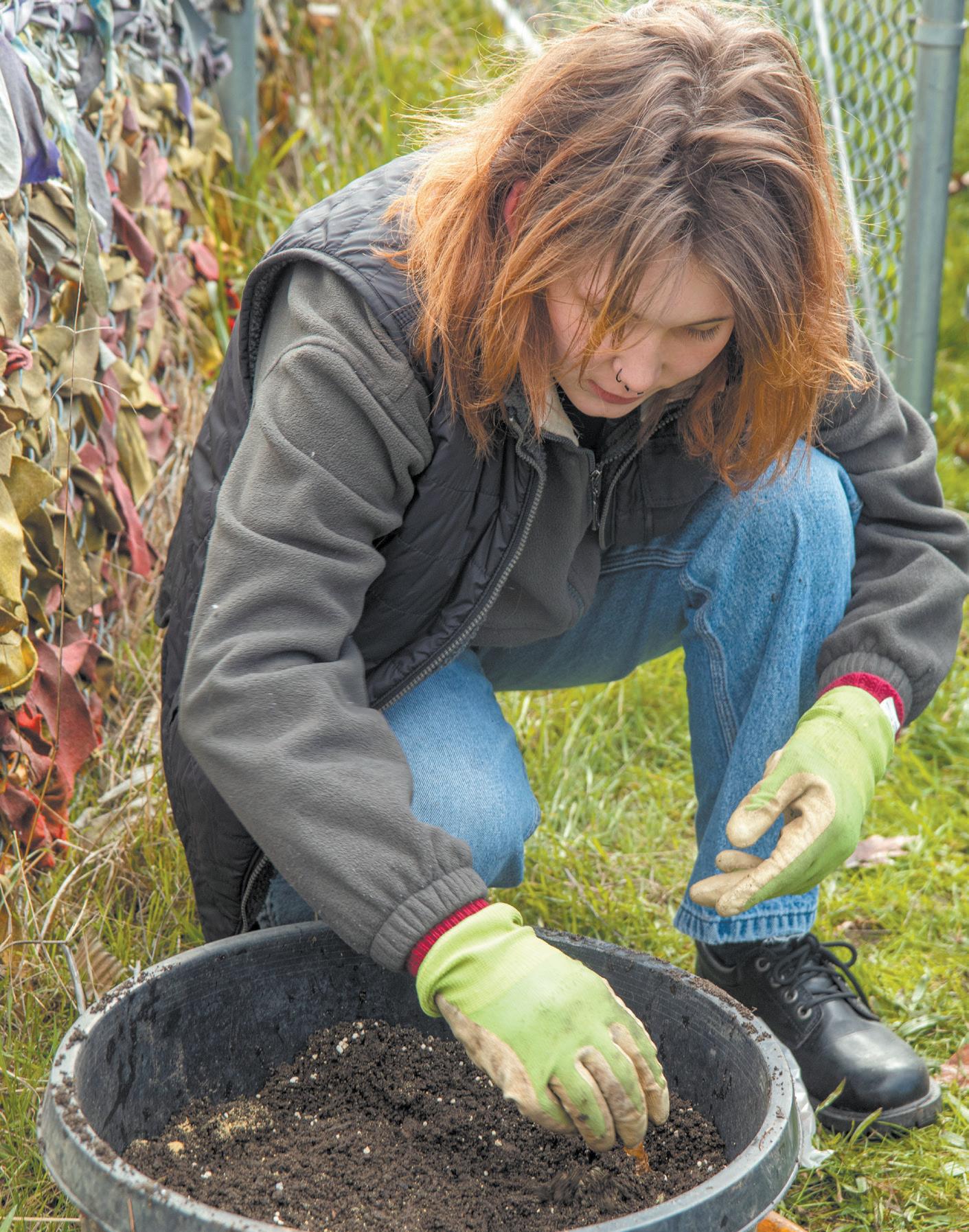
Dietrick felt it wouldn’t be right to bring the project to Oregon without having the Jewish community involved. For this particular reason, she collaborated with Oregon Hillel. However, she also sees meaning in cross-cultural work. Beyond Hillel, she partnered with the Unitarian Universalist Church in Eugene, North Eugene High School and Inspiration Garden in Independence, Oregon.
“The flowers are all the same, but everyone’s thoughts, principles and thinking would be all for good causes, but different causes,” Dietrick said.
The Unitarian Church in Eugene includes people from a variety of faiths. Sigrid Reinhardt, a member of the church, said talking to people from differing beliefs can have a positive impact. She felt a responsibility to be involved in the project
to ensure the Holocaust is not forgotten.
“They say it can’t happen again, but I think it could because people are even more divided than ever here in our own nation,” Reinhardt said. “And it just seems like, ‘Haven’t we learned anything yet?’”
The church decided to bridge its planting event with its Trans Day of Remembrance event. Children attending Sunday school spent the morning learning about the trans community and the afternoon planting daffodils. Reinhardt said bridging the two events would symbolize that every child, no matter their race, religion or identity is deserving of life and dignity.
“One thing that’s a big focus right now is educating ourselves as white people,” Reinhardt said. “To try to… find our place in the world and understand our place.”
After being approached by Dietrick, the National Honor Society at North Eugene High School also joined the Daffodil Project. It was part of the students’ community service initiative. In the process, they faced several hurdles, the biggest of which was finding the right location.
Several students wanted to plant the flowers at their new campus, opening next year. Due to construction this was not a possibility. Students also wanted to bring the project to Emerald Park, however the park declined.
After several months, Kelly Middle School approved to house the project. While this was not their original plan, Marques Perez and Zoey Nye, two of the student directors of NHS, were delighted to have the flowers planted at their old middle school. Nye felt that it is a teaching opportunity for younger students.
“It’s [a] memorial. It’s remembrance. And it’s appreciating where we have come,” Nye said. “And I think that’s the most important thing, to show the lives that were affected.”
Jewish people make up about 2% of the population in the United States, according to Pew Research Center. They cannot, alone, fight against antisemitism. They require the support of others.
“[The Daffodil Project is] not just about Jews dying again. It’s not just about genocide,” Andy Gitelson, executive director at Oregon Hillel, said. “[It’s] a reminder as to why this is an important lesson for all communities to understand…especially at a time when there’s a heightened sense of nationalism that’s happening broadly around the world.”
By commemorating those who perished, the Daffodil Project aims to educate the community.
Jonah Kaplan, a member of Hillel believes that memory is a core aspect of Judaism. They say that it is important to remember tragedies and the events that led up to them.
“Other cultures don’t have the same insistence on memory that ours does,” Kaplan said. “And we have that insistence for a reason. We have that insistence because it helps us remember the lessons of our past.”
The Daffodil Project doesn’t only commemorate those who perished but supports Holocaust survivors and includes works to aid children facing humanitarian crises. Through various programming and fundraisers, the project provided relief for children in South Sudan and Rwanda and Ukrainian refugees.
“This really is a collective effort,” Videlefsky said. “[It] unites us and each side to participate and teach our kids common sense in action.”
For Gitelson, this bridging of backgrounds toward a common goal is inspiring. He was delighted to hear about the project from a non-Jewish member in the community.
“This is really special, in that [Dietrick] and her husband really saw the value of this and saw an opportunity to engage the Jewish community in this,” Gitelson said.
The involvement of Dietrick, Reinhardt and the students from North Eugene High School may be a sign of hope — that people from different backgrounds and beliefs can come together for a common goal. The 1,000 daffodils planted in Oregon this year commemorate 1,000 of the children who died in the Holocaust. They also represent resilience and a communal effort to work towards a better society.
“I want [the Daffodil Project] to bring the importance of Jewish history more to the forefront of people’s minds,” Azen said. “When you walk by and you see all these blooming flowers, you maybe take a moment to stand in solidarity with the lives lost.”
Could Chris Solensky be the answer to Ducks’ recent distance problem?
BY ELLIOTT DEINS • TWITTER @ELLIOTTD_SPORTSFormer American record holder, five-time NCAA national champion and Oregon’s new assistant coach, Chris Solinsky, could be the breath of fresh air the Ducks’ distance program needs.
The University of Oregon track and field program is littered with accolades and success, especially in longer events. The likes of Cole Hocker, Kathy Hayes, Lisa Martin and Steve Prefontaine have set an undeniable standard for Ducks who run distance, but one that hasn’t been matched recently.
Only one Oregon athlete was in the 2022 NCAA finals for distance events: Aaron Bienenfeld, who finished eighth in the men’s 10,000-meter and 13th in the 5,000-meter. Overall, the women’s team finished No. 11 and the men No. 25 in the finals last season. As a result of this performance, the university hired a new head coach, Jerry Schumacher, in July 2022.
One of Schumacher’s first moves after taking the reins was revitalizing the Ducks’ distance performance by bringing on Solinsky in December 2022. He will trust one of his star students with the tall task of rebuilding winning ways of Oregon’s distance.
Solinsky was coached by Schumacher for over a decade. After seeing Solensky’s drive as an athlete and success as an assistant coach, Schumacher knew he’d be a great addition to the team.
As a collegiate athlete at the University of Wisconsin, Solinsky excelled. He won five national titles, four conference titles and became a 14-time AllAmerican under Schumacher.
After college, Solinsky transitioned into professional running and ended up at Bowerman Track Club with Schumacher. Solinsky set the American record for the 10,000-meter in 2010 with a time of 26:59.60.
While still running professionally, Solinsky was a volunteer coach at the University of Portland from 2012 to 2014. He was then brought on as an assistant at College of William and Mary in Williamsburg, Virginia. He retired as a professional in 2016 and was promoted to head distance coach.
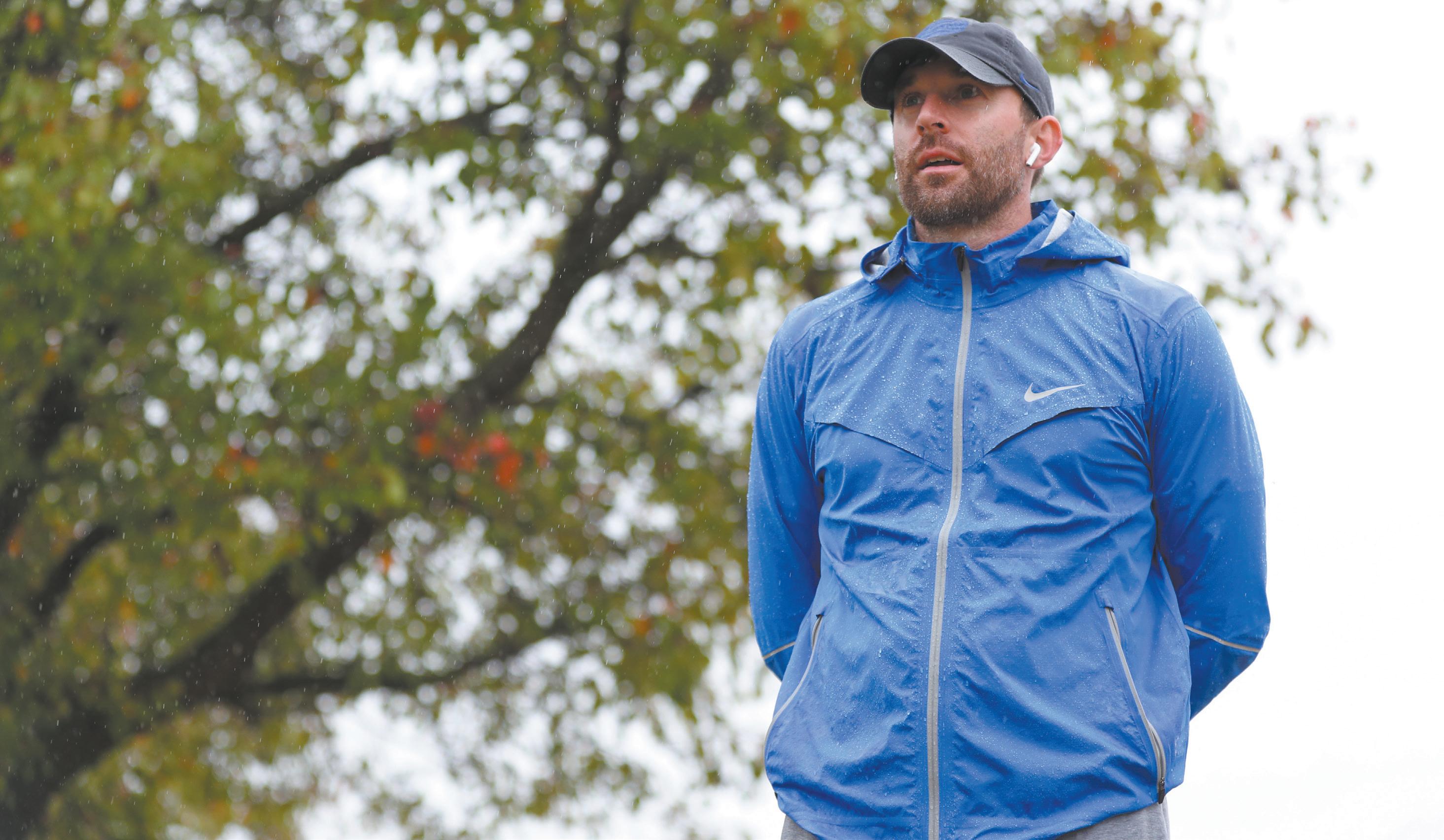
Solinsky was hired by the University of Florida as an assistant distance and cross country coach in 2017. Under Solinsky, the women’s cross country team had two top-5 finishes at the SEC Championships and produced a runner-up in the 2022 national championship, Parker Valby. The Gators swept the NCAA track and field national championships last season at Hayward Field in Eugene.
Could Solinsky’s work ethic and serial success be the piece that has been missing for Oregon’s distance dilemma? The answer will be revealed when the outdoor season begins in March.



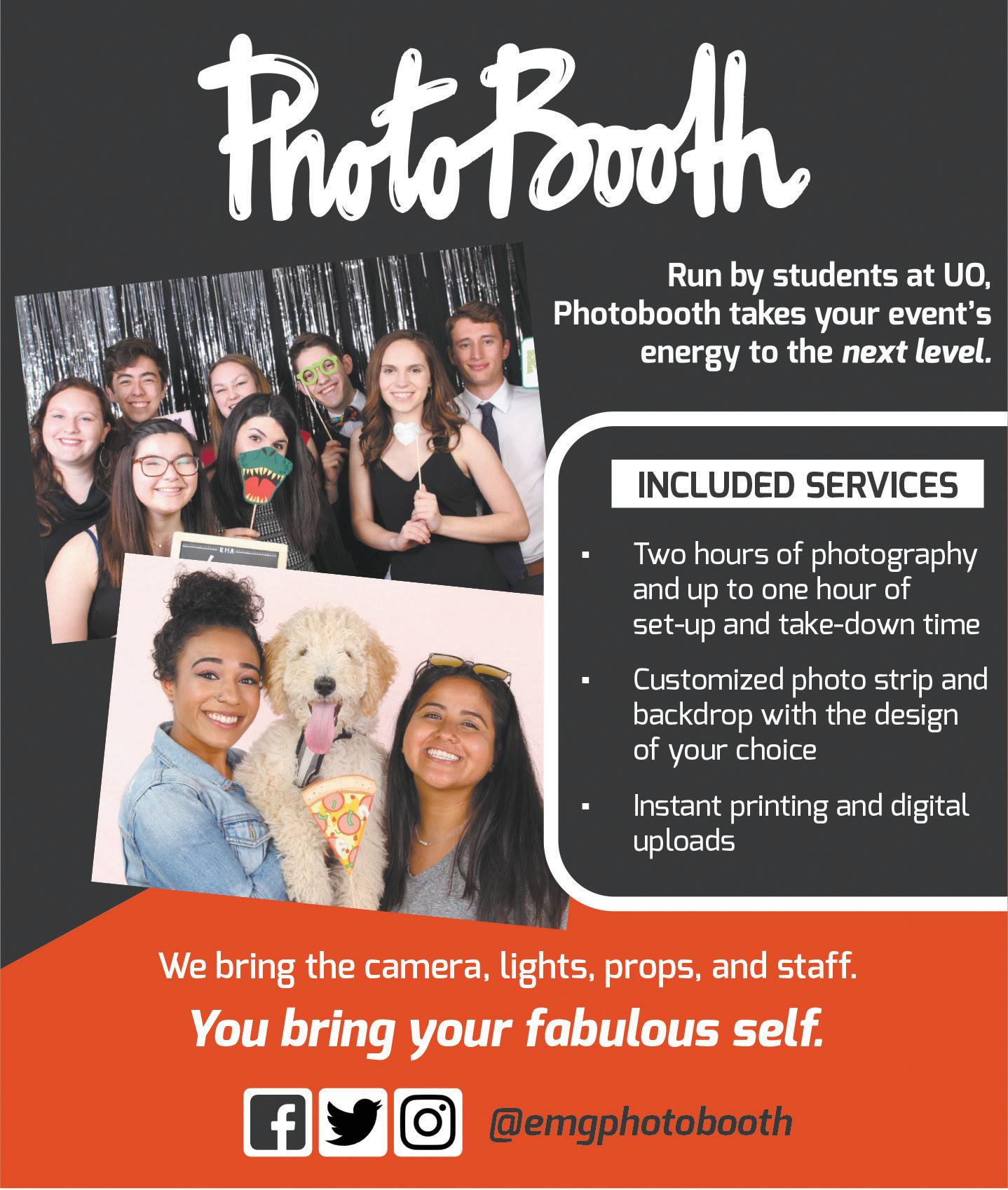
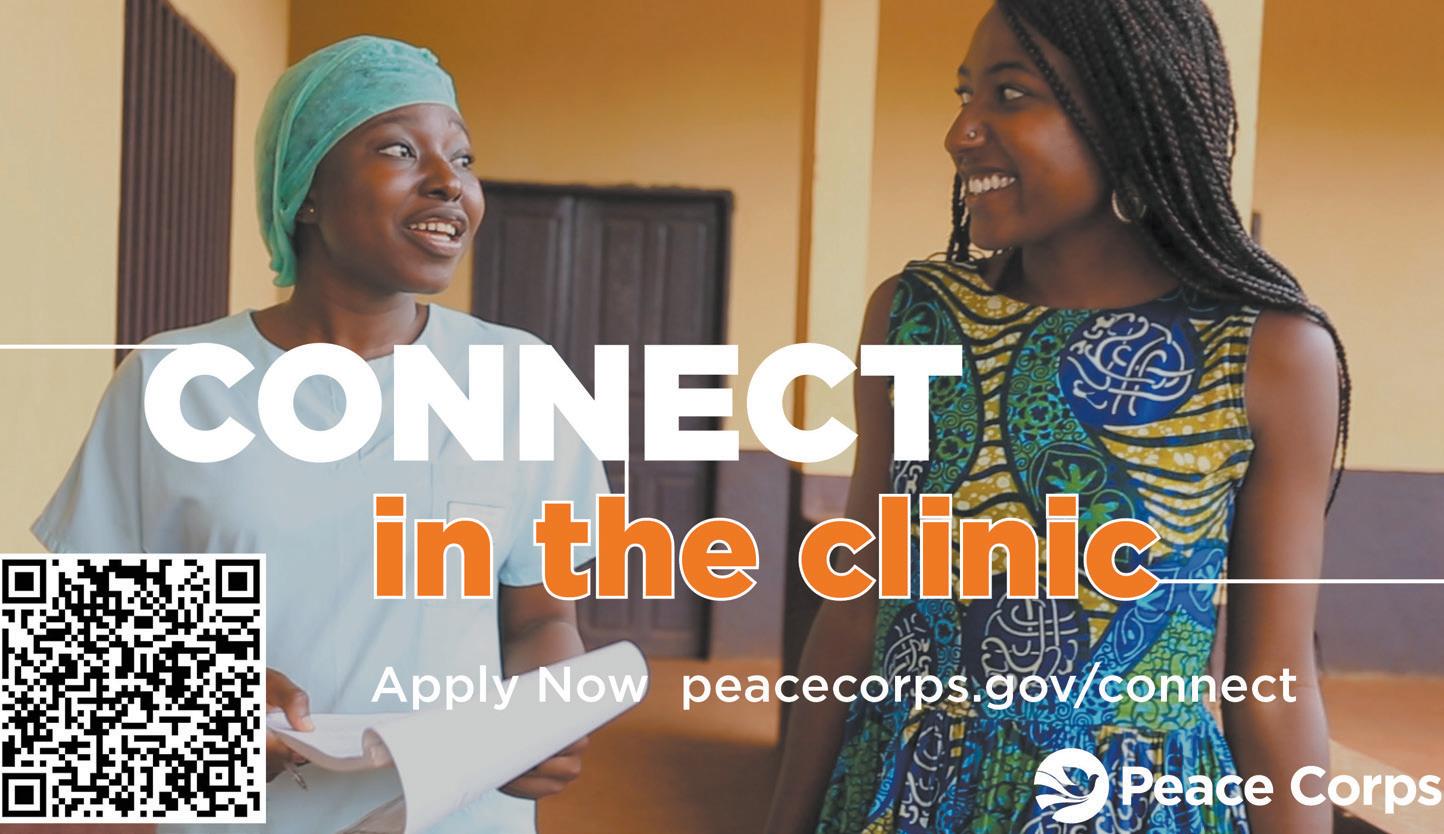

It’s the season of love, and one of Hallmark’s favorite holidays is upon us. Hated by most or celebrated by many, Valentine’s Day seems to be a moot point for those without a significant other.
But the notion that romantic gestures must be from one person to another is outdated. In the young adult era of independence and selfdiscovery, the most important relationship in your life is the one you have with yourself.
In 2012, when author Christine Arylo published her best-selling novel, “Madly in Love with Me,” Feb. 13 was deemed as Self-Love Day.
Ancient Greeks considered self-love or philautia to be one of the six varieties of love. Popularized in the 60s during the hippie era, society’s definition of self-love has evolved and become more prevalent as mental health and wellbeing comes to the forefront of human issues.
“Self-love is valuable to me because it means that I’m considering my own well being as much as other people and putting the things that make me happy as a priority,” Claire Conger, a sophomore journalism major at University of Oregon, said.
Emma Seppälä, Ph.D., author, Yale lecturer and emotional intelligence expert, defines self-love as “treating ourselves as we would a friend. Rather than berating, judging, or adding to a friend’s despair, we listen with empathy and understanding, encourage them to remember that mistakes are normal, and validate their emotions without adding fuel to the fire.”
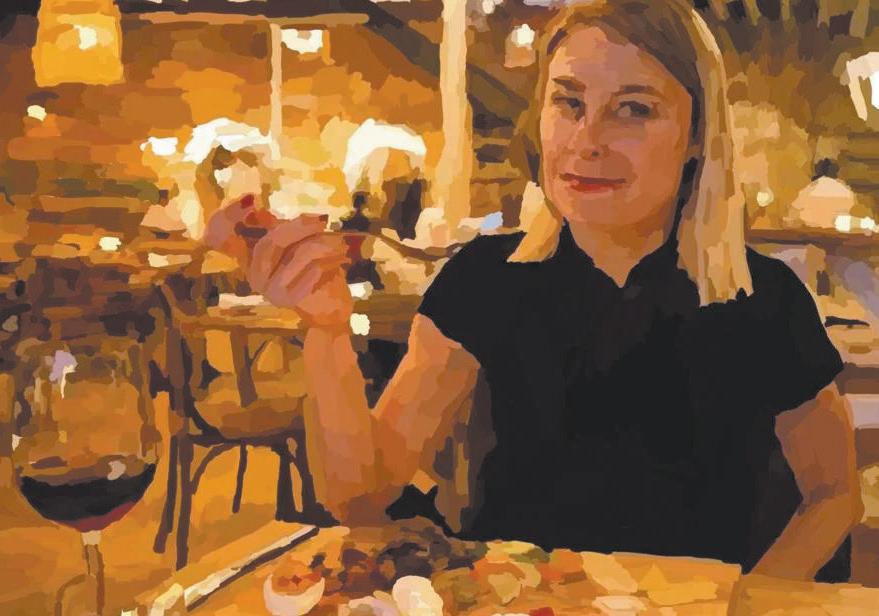
Seppälä cites the benefits of self-love as increased productivity, decreased stress and overall boosted mental strength. These things can lead to other positive outcomes such as better sleep, better grades, better relationships and increased job opportunities.
Self-love can be practiced in a multitude of ways depending on individual preference. From daily affirmations to meditation to buying yourself a little treat, rituals performed with the intention to appreciate oneself will reap the benefits of self-love.
For those dreading spending Valentine’s Day alone this year, Self-Love Day is your silver lining. There is no rule that prohibits buying roses and Russell Stover for yourself after all.
In the spirit of Self-Love Day, we asked UO students what they do to take care of themselves.
Conger said she practices self-love by simply spending time with herself. “I like to wake up a little bit early so I can have a coffee and just sit and enjoy the day before I have to do stuff,” Conger said.
Sebastian Duffy, a senior political science major at UO, said he journals and practices creative expression as a self-love ritual to “get my feelings in order.”
Angela Hernandez, a junior at UO, said she prioritizes self-care. “I try to go to the gym or even just watch a movie and do a face mask, something so simple as that can really help to take away stress.”
While Self-Love Day was created with the intention to counteract Valentine’s day, it is not exclusive to those who are single and it is not limited to Feb. 13. Self-love is an ongoing practice, a process that takes time to adapt and may feel awkward at first, but creates a lasting positive internal relationship.
For all bitter singles who stew in their loneliness each Valentine’s Day, Self-love Day is for you.
BY JESS MCCOMB
On Friday, Feb. 3, members of the Indigenous community at the University of Oregon hosted a Taking Up Space event in the Kalapuya Ilihi residence hall. The event consisted of a social hour, followed by a presentation about Oregon tribes and the Kalapuya people and a healing ceremony accompanied by prayer.
Individuals present at the event included members of the Native American and Indigenous Studies Academic Residential Community and the Native American Student Union.
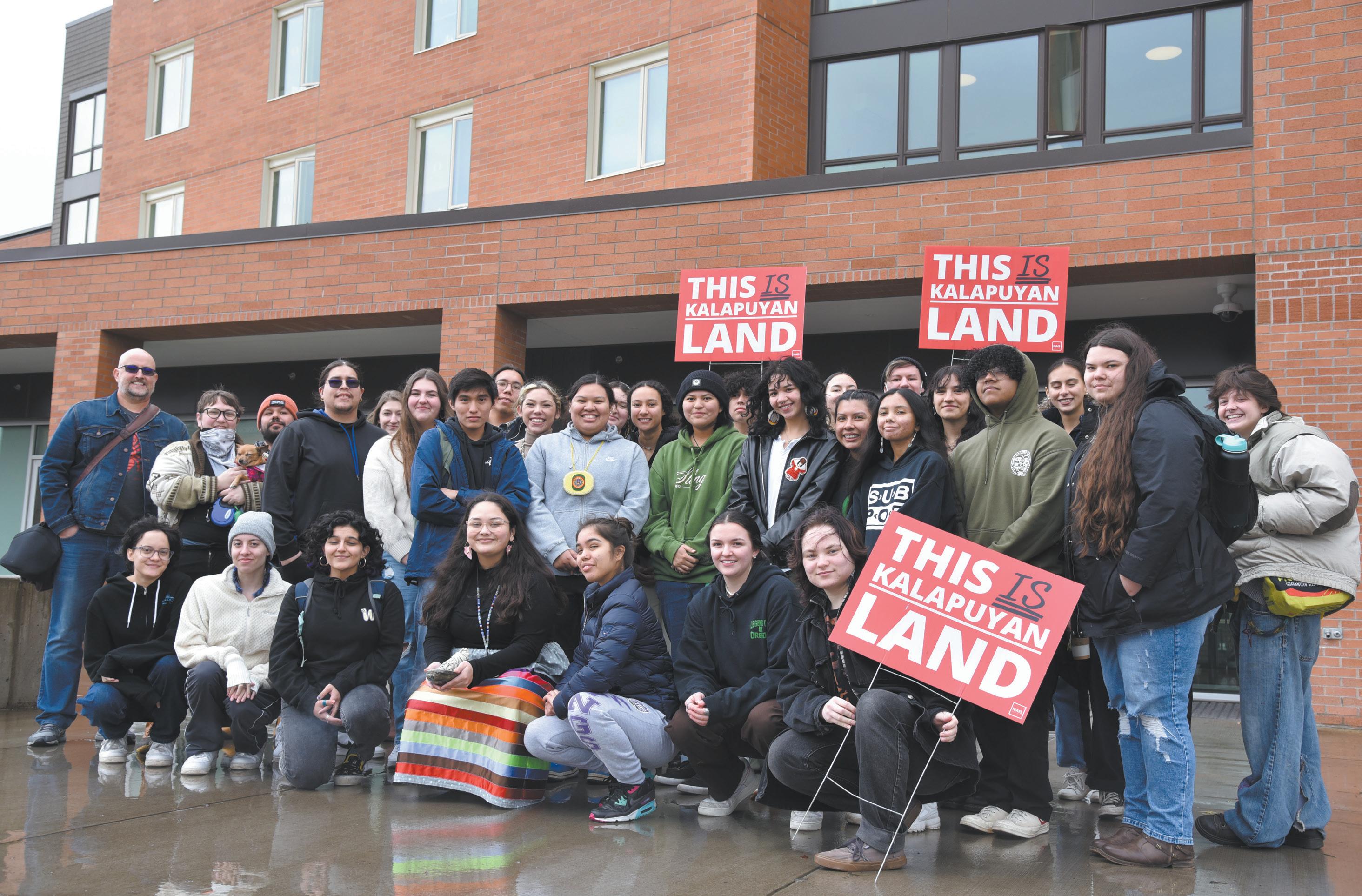
Taking Up Space was held in light of the recent vandalization that took place in Kalapuya Ilihi, when a sign posted in the NAIS ARC office that reads, “this is
BY MIRANDAH DAVIS-POWELLKalapuyan land” was defaced. After the vandalization, the text on the sign was altered to read “this isn’t Kalapuyan land.”
The vandalization was met with much disappointment from the Indigenous community, especially those who are residents of Kalapuya Ilihi. The building is named after the traditional homelands of the Southern Kalapuya people, the space that the University of Oregon now occupies. “It was not surprising to me,” Marisol Peters, a first-year student part of the NAIS ARC and NASU enrolled in the Karuk tribe, said. According to her, acts like this aren’t surprising when attending a university where microaggressions and passive racism have
become the norm.
Indigenous students are exhausted from having to fight for their acknowledgement and were disappointed about the turnout of nonnative students at last Friday’s event, according to Peters.
“It was an event supposed to be held for nonnatives,” Tiera Garrety, a junior studying Native American and Indigenous Studies, a member of NASU and the NAIS ARC and a citizen of the Confederated Tribes of the Chehalis Reservation, said. She expressed frustration that despite there being a table-wide spread of regalia and informative books by Indigenous authors, students just walked right past it without asking questions.
“When you present [students] with opportunities to actually participate in [community events] then they choose not to because they would rather not — because it’s going out of their way,” Garrety said.
The Native American Student Union has also recently had to fight for its funding back from the student government. The Associated Students of the University of Oregon had a surplus fund of nearly $1 million for this fiscal year, and after redistributions in December 2022, cut the NASU funding in half, summing about $12,000.
NASU and other Indigenous student groups on campus protested the budget cuts by ASUO at a hearing on Tuesday, Jan. 15.
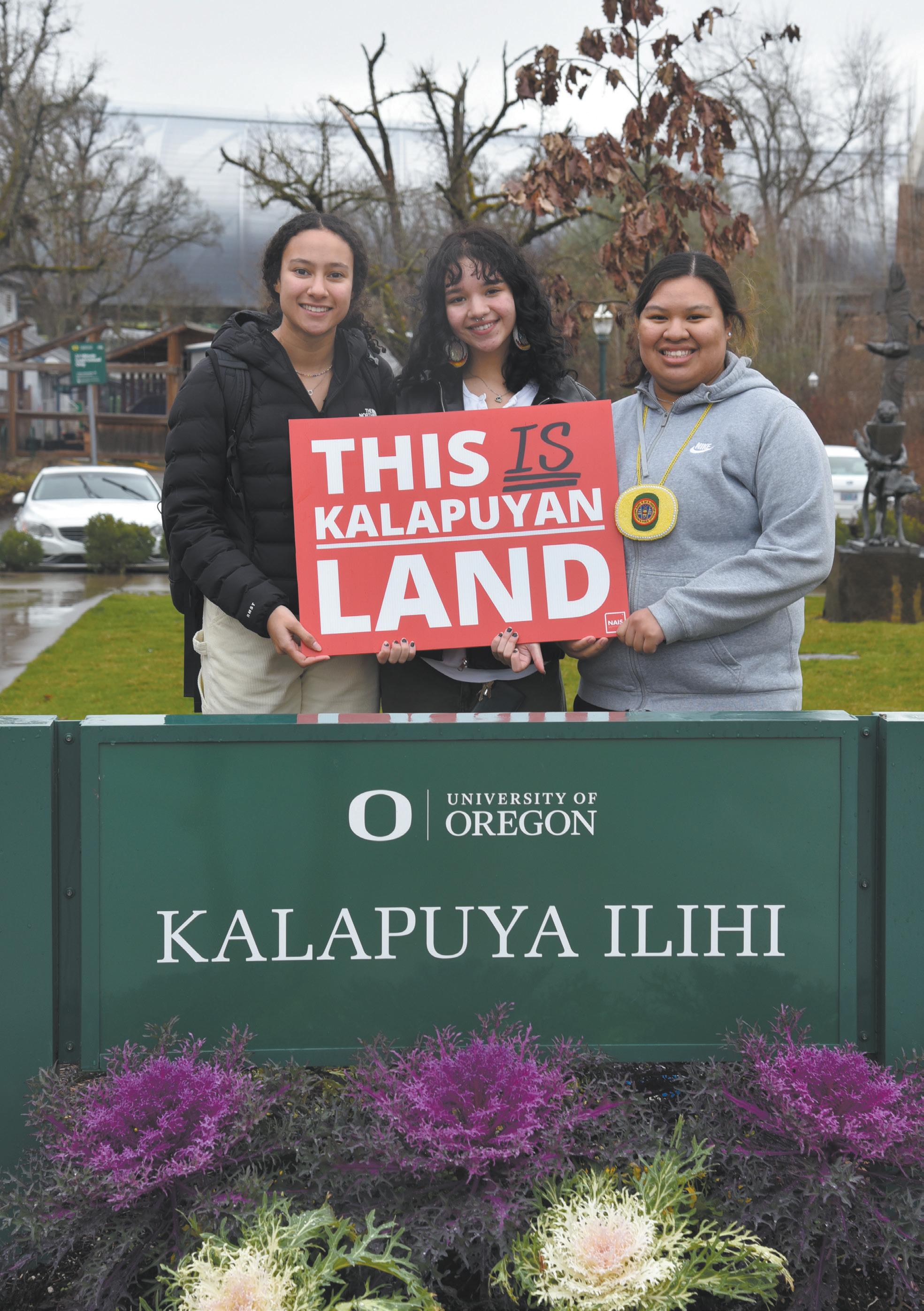
According to Garrety, after the protests at the NASU budget hearing, the NASU’s funding has been restored by about $7,000. ASUO is also contributing by funding the annual Mother’s Day Powwow hosted by NASU. Regardless, the act was felt by the Indigenous community, leaving many feeling disappointed.
“It’s so frustrating. It’s so draining when every single day of your life it’s just fighting for recognition, fighting for your basic human rights, fighting for your existence,” Garrety said.“We are the most visible, invisible people on campus.”
The vandalization in Kalapuya Ilihi took place on the same night as the NASU budget hearing. While there’s no confirmed correlation, many Indigenous students are wondering if the two events may have been related, according to Peters and Garrety.
Despite these recent events minimizing the existence of Indigenous students at the UO, their community remains resilient. According to Peters, this year hosts the largest cohort that the NAIS ARC has ever seen, and the Taking Up Space event was a success. “While it was disappointing to see that non-natives didn’t show up, it was heartwarming because it’s like having family around,” Peters said.
Garrety and Peters said the Indigenous community would love to see more participation in their community events, especially when the wider non-native student population is invited. According to Garrety and Peters, activism isn’t
always about protesting. It’s about showing up consistently. Peters said being a good ally requires individuals to get out of their comfort zones.
“We are your peers. We are your teachers. We are your friends,” Peters said. “I want to see
just more celebration of things we’re doing, not because you’re trying to counteract a bad thing that happened to us but just because you want to celebrate us.”
